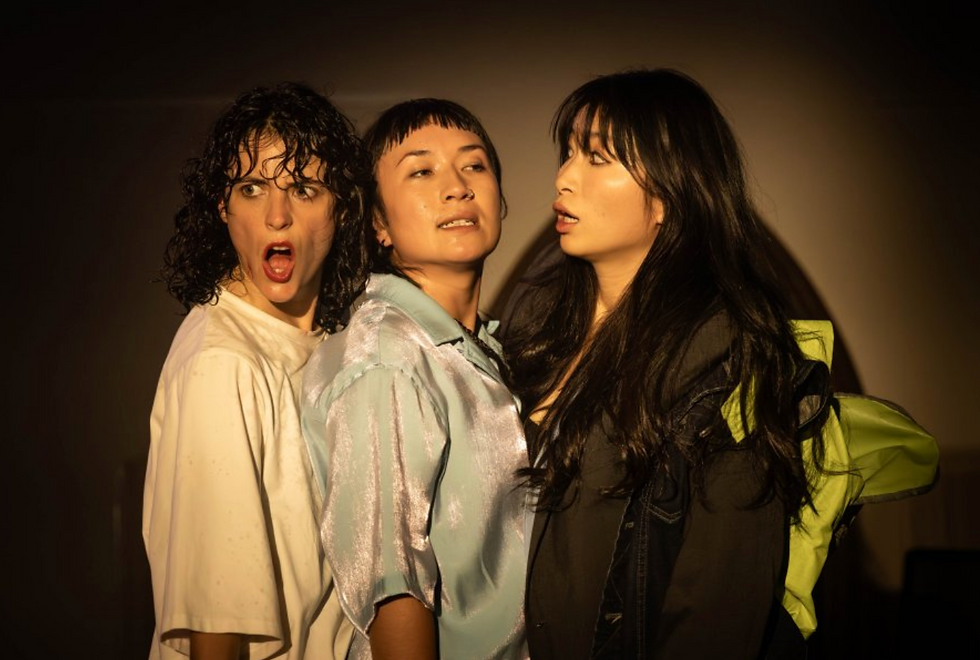Review: Ernani at The State Theatre
- Theatre Travels

- May 17, 2021
- 3 min read
Review By Alice Mooney
After enjoying Opera Australia’s recent opening of Aida, I was excited once again to experience another Verdi classic at the Art Centre’s State Theatre. All who attend opening nights with Opera Australia are encouraged to embrace a black-tie dress code to make a night of it, and many certainly did. Bow-ties, gowns and accessories graced the foyers of the State Theatre ready for the opening of Ernani. While the miserable Melbourne weather played out its third act by the evening, audience members could look forward to two and half hours of cultured respite journeying back to sixteenth century Spain in a tale of…you guessed it love, duty and honour.
It is 1519 in Spain during the high renaissance, and Ernani plots to save his lover Elvira from a marriage to her Uncle and Guardian Don Ruy Gómez de Silva. However, Ernani has competition in the King of Spain Don Carlo, who also declares his love for Elvira escalating the situation into a quadrangle stand-ff. What follows is a dance amid the four participants who plot, disguise and duel their way to Elvira’s heart. After a tense quarrel between Ernani, Silva and the newly chosen Holy Roman Emperor Don Carlo, Ernani and Elvira receive their blessing to wed. Yet, like all traditional epic love stories, what starts out light and fun, nearly always ends in tragedy. Ernani’s more pleasant run-time at two hours, plus the thirty-minute interval and a shorter second half clocking only forty minutes, bodes well for both the story-line and audiences. The first half being more plot heavy and the second brings with it a faster pace building to a splendid melodramatic ending.
Director Sven-Eric Bechtolf, brings together a larger-than-life cast. Tenor, Diego Torre as Ernani is a joy to watch. He is dynamic in his character, showcasing an exaggerated, impulsive youth. He and Natalie Aroyan, as Elvira, pair well and their chemistry together radiates through-out their duets namely Ah! Morir potessi adesso in act II. Aroyan has incredible range, and punctures through the chorus with satisfying clarity. The collective of tenor, soprano and Vitalij Kowaljow’s rich bass is a winning combination and pleasing to experience.
I particularly appreciated the impact of the set design and its contribution to the overall success of this piece. Bechtolf’s vision was to take Ernani and present it as a sixteenth century performance within a nineteenth century theatrical scape. The scenic designer Julian Crouch has produced a breathtaking set that has an equally important role to play and fits succinctly with this charming adaptation. Crouch even replicates 19th century theatrical methods and techniques in transitions, like the aesthetically impressive helms used as pulleys to initiate flowing and satisfying transitions. Each set divides the vast State Theatre stage into town facades, a Claude Lorrain inspired landscape, a castle interior, a grand bed chamber and a crypt, all encased within a nineteenth century theatre scape. You can also expect comical interludes with clumsy, clown-like tid-bits and breaking forth wall rules to communicate with the audience. This idea was well executed and gave them artistic licence to focus on and highlight the melodramatic libretto as well as buying much needed time for stressful costume changes.
When the opening piece of an opera begins with Evviva! Beviam! (Cheers! Let’s drink!) you know the inevitable story arc will end in tragedy, but it does not mean you cannot have fun on the way. Ernani is the ultimate tragicomedy. I believe the nineteenth century theatre experience is fun step in the right direction in reviving Verdi’s classics, however I cannot help notice opera’s lack of diverse and cross-generational spectators. This is to be expected given ticket prices begin at $69 and go up to a steep $287 for premium seating and it is such a specific and acquired artform and cultural experience. I feel there is an exciting opportunity for opera to revive itself in the wake of our post-pandemic arts drought. This adaptation of Ernani is an ode to opera through the ages and a window into theatre experiences past, in contrast to Aida’s futuristic digital rejuvenation. Ernani’s sheet music is so enjoyable that it was the first opera ever to be recorded. The instrumental compositions as well as the performers, commit more to dramatic tedium bringing fervour and enthusiasm to the ‘bold and beautiful’ moments making them exceptionally well received. Basic disagreements can warrant taking one’s own life in the heat of honour and love, and by playing into this, Bechtolf has avoided the trap of trying to make a Hamlet out of a Twelfth Night. There are no well-known arias in this piece but you’ll love the upbeat, lyrical and rhythmic choruses, and sparring duets. If you’re looking for some nineteenth century pomp in your opera, look no further than the tragicomedy of Ernani. Evviva! Beviam!
Image Credit: Opera Australia












